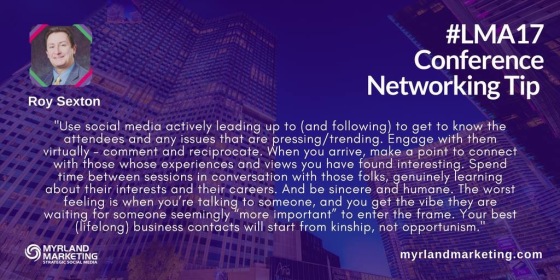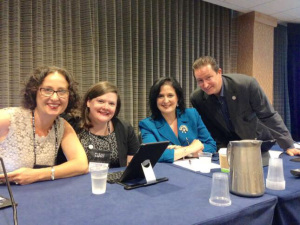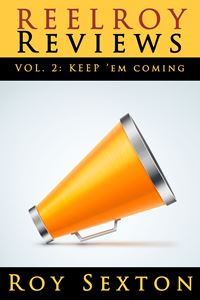
[Image Source: Wikipedia]
“All the world will be your enemy, Prince with a Thousand Enemies, and whenever they catch you, they will kill you. But first they must catch you, digger, listener, runner, prince with the swift warning. Be cunning and full of tricks and your people shall never be destroyed.” ― Richard Adams, Watership Down
When even our escapist entertainment reminds us of the dystopia in which we are currently living as Americans, you know things are dire indeed. This weekend we took in a Saturday night production of Disney’s Beauty and the Beast by our talented pals at Augusta, Michigan’s Barn Theatre and a Sunday matinee of the film adaptation of Alexandra Bracken’s young adult novel The Darkest Minds. Both were engaging diversions, and, yet, as I sat through both, I was reminded repeatedly of how disconcertingly life imitates art.

If there were ever a tale as old as time that functions as a parable of toxic masculinity, it is Disney’s take on Beauty and the Beast, adapted from Jeanne-Marie Leprince de Beaumont’s fairy tale first as an Academy Award-winning animated musical in 1991, then as a Broadway stage show in 1994, and finally as a live action film musical in 2017. And it’s made boatloads of cash in each iteration.

Andrea Arvanigian as Belle and Charlie King as Maurice in “Beauty and the Beast” at Barn Theatre.
Let’s see. Belle, a bookish beauty, is caught between two brutes: 1) a misogynistic and vainglorious hunter (Gaston) who sees her as a trophy to be bullied and berated into submission and 2) a literal beast of a man who forces an exchange of her imprisonment for her father’s freedom and locks her in his castle until she succumbs to his “charms.” It may as well be renamed “#MeToo: The Musical.”
As always, the Barn wows with their stagecraft, turning around a technically complex show with barely a week of rehearsal, all the while smiling and parking cars and mowing lawns and serving drinks and selling souvenirs. Be our guest, indeed!
I’d never seen the stage iteration, and I admit to having some difficulty with the first act which pads out the narrative with some forgettable numbers and comic bits and belabors the Beast’s darker impulses to the point that we begin to lose the sense of isolation and loneliness that humanizes him in the films (not Alan Menken’s and Tim Rice’s finest work – Rice took over for the late Howard Ashman for the Broadway adaptation’s additional material). I now understand why Disney went back to the drawing board with last year’s live action flick, rather than adapt the stage version.

Swiped from Jamey’s Facebook page … sorry (not sorry)!
That said, Jamey Grisham as the titular beast does a lovely job working around those limitations and giving us a Beast who is more of a woebegone man-child than an outright Stanley Kowalski caveman. As I said to him following last night’s performance, his Beast was like a misunderstood pit bull who’d been left at the shelter too long. He looked at me quizzically, but, believe me, for an animal lover like me, that’s high praise. Jamey has the voice of an angel and moves beautifully, but arguably his finest moment is his quietest: when Belle reads King Arthur aloud to the admittedly illiterate Beast. The tender poignancy of Andrea Arvanigian’s Belle sharing a beloved tome with a creature who has never received the most basic of kindnesses is palpable. And the subtle canine physicality that Grisham brings to the scene (how does a Beast sit in a chair, anyway?) is heartwarmingly whimsical.

Albert Nelthropp as Gaston in Barn Theatre’s “Beauty and Beast.”
Albert Nelthropp has a true gift for balancing the cartoonish and the menacing as Gaston. He never misses a comic beat, has a voice (and articulation) that fills the cavernous Barn space, and possesses that rare ability to be likable without losing the utter despicability of his character. Penelope Alex is a lovely and warm Mrs. Potts, delivering the title tune in a soft and lullaby-like manner.
And Hans Friedrichs is having the time of his life as Maurice Chevalier-inspired major domo Lumiere. Few performers could be as elegantly hysterical with (basically) a flashlight strapped to the end of each arm. He and Samantha Rickard as his paramour-turned-feather-duster Babette are a hoot.
Disney’s Beauty and the Beast runs through August 10, with tickets available at www.barntheatreschool.org
 Be sure to stick around for the Bar Show, a Barn Theatre tradition where the apprentices take over the Rehearsal Shed post-performance to deliver a kooky comic cabaret with polish and panache. Grisham directs and choreographs (is there anything this man can’t do?) with a zippy but inclusive efficiency.
Be sure to stick around for the Bar Show, a Barn Theatre tradition where the apprentices take over the Rehearsal Shed post-performance to deliver a kooky comic cabaret with polish and panache. Grisham directs and choreographs (is there anything this man can’t do?) with a zippy but inclusive efficiency.

Bar Show
The Disney theme continues with numbers from Coco, The Aristocats, and The Lion King, plus the lost number “Disneyland” from Marvin Hamlisch’s and Howard Ashman’s musicalization of Smile and a pretty epic opener “The Greatest Show” from Benj Pasek and Justin Paul‘s The Greatest Showman (which, for all intents and purposes, should be a Disney musical … but isn’t).
Video clips at the bottom of this post.
From musicalized misogyny on Saturday to a sci fi fable on Sunday about children locked in cages by the government, forcibly separated from their parents – The Darkest Minds … I told you our entertainment choices this weekend seemed oddly ripped from today’s headlines. Or I just spend way to much time trolling CNN’s and MSNBC’s websites.

[Image Source: Wikipedia]
That’s a bit of a shame, as I found its depressing and ominous qualities oddly … refreshing (?). It is necessarily discomforting in today’s world to watch a piece of popcorn entertainment depict young children forcibly ripped from their parents’ arms and sent to internment camps for being “different” (albeit in this instance for having super powers). Yes, we’ve covered this territory a lot; hell, it’s basically the same premise Marvel’s X-Men have been milking for nearly sixty years. Yet, it remains timely. Sadly timely.

[Image Source: Wikipedia]

[Image Source: Wikipedia]
Stenberg is a star in the making, so her mere presence makes the film far more interesting to watch than it should be. A la Dorothy in Oz, she has a band of scruffy friends – Harris Dickinson as dreamy love interest Liam, Skylan Brooks as cerebral Chubbs, Miya Cech as mute Zu – who aid and abet her adventures. The foursome are by far the best thing in the film with a chemistry that deserves a far better vehicle to showcase it.

[Image Source: Wikipedia]
Of course, all the adults – well-meaning and earnest Mandy Moore (that’s pretty much her range right there), glowering Gwendoline Christie (sadly sans her shiny Star Wars Stormtrooper helmet), and West Wing‘s Bradley Whitford being all West Wing-y as, yes, the President – are on a mission to collect the super kids to do … well … something? Take over the world? Kill the remaining kids? Clean boots and grow vegetables? Heck, I have no idea.

[Image Source: Wikipedia]
Ruby improbably finds a paperback copy in an abandoned shopping mall, reads it to her compatriots, and then repeats ad nauseum Adams’ narrator’s memorable caution to “Prince Rabbit” that “all the world will be your enemy.”
Sadly, these days, those words seem more prescient than ever. So much for escapist entertainment.
_________________________
 Reel Roy Reviews is now TWO books! You can purchase your copies by clicking here (print and digital). In addition to online ordering at Amazon or from the publisher Open Books, the first book is currently is being carried by Bookbound, Common Language Bookstore, and Crazy Wisdom Bookstore and Tea Room in Ann Arbor, Michigan and by Green Brain Comics in Dearborn, Michigan. My mom Susie Duncan Sexton’s Secrets of an Old Typewriter series is also available on Amazon and at Bookbound and Common Language.
Reel Roy Reviews is now TWO books! You can purchase your copies by clicking here (print and digital). In addition to online ordering at Amazon or from the publisher Open Books, the first book is currently is being carried by Bookbound, Common Language Bookstore, and Crazy Wisdom Bookstore and Tea Room in Ann Arbor, Michigan and by Green Brain Comics in Dearborn, Michigan. My mom Susie Duncan Sexton’s Secrets of an Old Typewriter series is also available on Amazon and at Bookbound and Common Language.



















![Description: Film poster; Source: Wikipedia [linked]; Portion used: Film poster only; Low resolution? Sufficient resolution for illustration, but considerably lower resolution than original. Other information: Intellectual property by film studio. Non-free media use rationales: Non-free media use rationale - Article/review; Purpose of use: Used for purposes of critical commentary and illustration in an educational article about the film. The poster is used as the primary means of visual identification of this article topic. Replaceable? Protected by copyright, therefore a free use alternative won't exist.](https://reelroyreviews.com/wp-content/uploads/2013/03/the_book_of_mormon_poster.jpg?w=560)
![Description: Film poster; Source: Wikipedia [linked]; Portion used: Film poster only; Low resolution? Sufficient resolution for illustration, but considerably lower resolution than original. Other information: Intellectual property by film studio. Non-free media use rationales: Non-free media use rationale - Article/review; Purpose of use: Used for purposes of critical commentary and illustration in an educational article about the film. The poster is used as the primary means of visual identification of this article topic. Replaceable? Protected by copyright, therefore a free use alternative won't exist.](https://reelroyreviews.com/wp-content/uploads/2013/03/oz_-_the_great_and_powerful_poster.jpg?w=202&h=300)
![Lincoln Description: Film poster; Source: Wikipedia [linked]; Portion used: Film poster only; Low resolution? Sufficient resolution for illustration, but considerably lower resolution than original. Other information: Intellectual property by film studio. Non-free media use rationales: Non-free media use rationale - Article/review; Purpose of use: Used for purposes of critical commentary and illustration in an educational article about the film. The poster is used as the primary means of visual identification of this article topic. Replaceable? Protected by copyright, therefore a free use alternative won't exist.](https://reelroyreviews.com/wp-content/uploads/2012/11/lincoln.jpg?w=202&h=300)